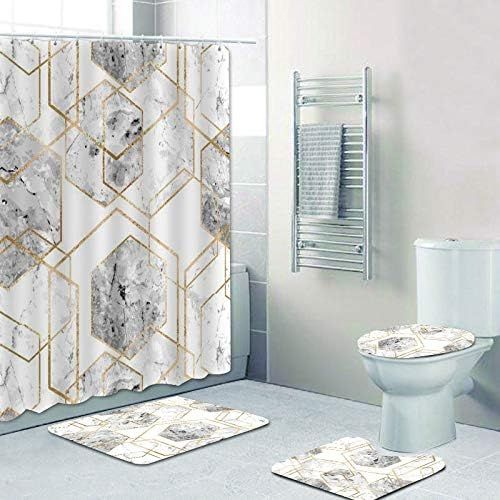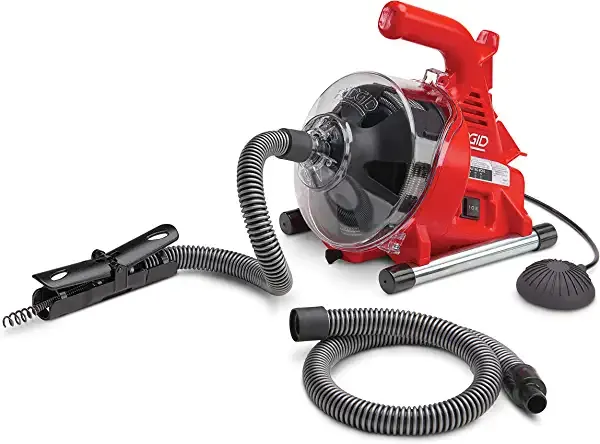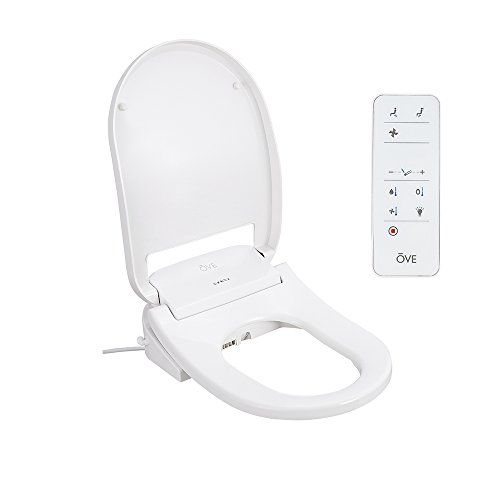How To Keep Bathroom Dry
Are you tired of dealing with a damp and musty bathroom? Do you want to know how to keep your bathroom dry and fresh? Look no further! In this article, we will provide you with practical tips and advice on how to maintain a dry bathroom that is free from moisture and mildew.
First and foremost, it is crucial to properly ventilate your bathroom. By opening windows or using a ventilation fan, you can effectively remove excess humidity and prevent condensation from building up.
Additionally, investing in a dehumidifier can help regulate the moisture levels in the air.
Furthermore, it is important to address any leaks or plumbing issues promptly. Even a small drip can contribute to the overall dampness in your bathroom.
Regularly wiping down surfaces and hanging towels and bath mats to dry can also make a significant difference.
By following these simple yet effective strategies, you can keep your bathroom dry and enjoyable for everyone to use.
So, let’s dive in and discover how to create a dry oasis in your home!
Key Takeaways
- Moisture-resistant flooring and waterproof paint create a barrier against water damage and prevent moisture seepage.
- Proper application of waterproof paint according to manufacturer’s instructions is crucial for maximum effectiveness.
- Moisture-resistant materials in the bathroom prevent mold and mildew growth and save money on repairs.
- Using moisture-resistant flooring and waterproof paint can extend the lifespan of the bathroom, withstand high humidity levels, and provide peace of mind for homeowners.
Ventilate Your Bathroom Properly
Make sure you’re ventilating your bathroom properly, so you don’t have to deal with that annoying and persistent dampness anymore. Proper bathroom ventilation is essential for maintaining a dry and healthy bathroom environment. By allowing fresh air to circulate, you can prevent the buildup of moisture and mold.
The benefits of a well-ventilated bathroom go beyond just keeping it dry. It also helps eliminate unpleasant odors and improves air quality. To achieve proper ventilation, start by installing an exhaust fan that’s adequately sized for your bathroom. Run the fan during and after showers to remove excess moisture from the air.
Additionally, keep the bathroom door open and consider opening a window if possible. By following these simple steps, you can say goodbye to a damp bathroom and hello to a fresh and dry space.
Use a Dehumidifier
Using a dehumidifier will greatly reduce the dampness and create a more comfortable environment in your bathroom. It not only helps prevent mold and mildew growth but also eliminates musty odors and reduces the chances of water damage to your walls and fixtures. A dehumidifier works by removing excess moisture from the air, which can be especially helpful in bathrooms where steam from hot showers and baths can accumulate. To ensure optimal performance, it’s important to regularly maintain your dehumidifier. This includes emptying the water collection bucket, cleaning the air filter, and checking for any signs of damage or wear. By incorporating a dehumidifier into your bathroom routine and properly maintaining it, you can enjoy a dry and comfortable space that feels fresh and clean.
Fix Any Leaks or Plumbing Issues
To ensure a more pleasant and healthy bathroom environment, it’s essential to promptly address and fix any leaks or plumbing issues that may arise. Fixing leaks is crucial because even a small drip can lead to water damage, mold growth, and unpleasant odors.
Start by inspecting the bathroom for any signs of leaks such as water stains, dampness, or a musty smell. Check the faucets, showerheads, and toilet connections for any loose fittings or cracks. Replace any worn-out washers or gaskets and tighten any loose connections.
If you notice any water pooling around the base of the toilet or behind the walls, it’s crucial to call a professional plumber to fix the problem.
By fixing leaks promptly, you can prevent costly water damage and ensure a dry and comfortable bathroom environment.
Hang Towels and Bath Mats to Dry
Hang your towels and bath mats up to dry after each use. Proper towel placement is essential to ensure that they dry thoroughly and quickly. Avoid hanging towels over the shower rod or on hooks that are too close together, as this can prevent air circulation and prolong drying time. Instead, use a drying rack or towel bar with enough space between each towel.
Make sure to spread out the towel so that it isn’t folded or bunched up, allowing for maximum airflow. Bath mats should also be hung up to dry, as leaving them on the floor can trap moisture and create a breeding ground for mold and mildew.
By following these simple steps, you can keep your bathroom dry and prevent any unwanted moisture-related issues.
Wipe Down Surfaces Regularly
Make sure you regularly wipe down surfaces in order to maintain a clean and hygienic bathroom environment. This practice not only keeps your bathroom looking fresh, but also helps prevent the growth of mold and mildew. Mold thrives in damp and humid environments, so wiping down surfaces regularly is essential in keeping moisture levels low. Use a mild cleaning solution and a clean cloth to wipe down countertops, sinks, and shower walls. Pay special attention to areas prone to moisture build-up, such as the corners of the shower and around the sink drain. Additionally, don’t forget to clean mirrors, faucets, and toilet handles. By incorporating this simple habit into your cleaning routine, you’ll ensure a dry and mold-free bathroom.
| Surfaces to Wipe Down | Recommended Cleaning Frequency |
|---|---|
| Countertops | Weekly |
| Sinks | Daily |
| Shower walls | Weekly |
| Mirrors | Weekly |
Use a Shower Curtain or Door to Contain Water
Using a shower curtain or door not only prevents water from splashing outside the shower area, but it also adds a touch of elegance and sophistication to your bathroom decor. Here are four reasons why using a shower curtain or door is essential for keeping your bathroom dry:
-
Waterproof flooring options: By containing water within the shower area, you can choose from a wide range of waterproof flooring options, such as ceramic tiles or vinyl flooring, that aren’t only practical but also durable.
-
Easy installation: Installing a shower curtain or door is relatively simple and can be done by following a few steps. This makes it a convenient option for anyone looking to keep their bathroom dry.
-
Cost-effective: Compared to installing a fully enclosed shower cubicle, using a shower curtain or door is a cost-effective solution. It allows you to create a barrier without breaking your budget.
-
Versatility: Shower curtains come in various colors, patterns, and designs, allowing you to personalize your bathroom. On the other hand, shower doors offer a sleek and modern look that can elevate the overall aesthetic of your space.
In conclusion, using a shower curtain or door isn’t only practical but also adds style to your bathroom while keeping it dry.
Install a Bathroom Fan
To ensure proper ventilation and prevent moisture buildup, you should consider installing a bathroom fan, which will significantly improve the air quality in your space. A bathroom fan helps to increase ventilation by removing excess humidity and odors from the room. It is especially important to have a bathroom exhaust system if you don’t have a window in your bathroom or if your window is small and doesn’t provide enough air circulation.
Here is a table that highlights the benefits of installing a bathroom fan:
| Benefits of Installing a Bathroom Fan |
|---|
| Removes excess humidity |
| Reduces mold and mildew growth |
| Prevents moisture damage to walls and ceilings |
| Eliminates unpleasant odors |
| Improves overall air quality |
By installing a bathroom fan, you can create a dry and comfortable environment in your bathroom, ensuring that it remains free from moisture-related problems.
Keep the Bathroom Door Open After Showering
After showering, you’ll want to leave the door open to allow the steam to escape and prevent any lingering moisture. This simple step is essential in preventing mold growth and improving air circulation in your bathroom.
When you close the door, the steam gets trapped, creating a humid environment that is ideal for mold to thrive. By leaving the door open, you allow the steam to dissipate and the moisture to escape, reducing the chances of mold growth.
Additionally, an open door promotes better air circulation, which helps to dry out the bathroom faster. This not only prevents mold but also eliminates any musty odors that can develop in a damp environment.
So, remember to keep the bathroom door open after showering for a dry and mold-free bathroom.
Use Moisture-Resistant Materials
When you’re renovating your bathroom, opt for moisture-resistant materials to ensure a long-lasting and worry-free space.
One of the key areas to focus on is the flooring. Choose a moisture-resistant flooring option such as ceramic tiles, vinyl, or stone. These materials are durable and able to withstand the damp environment of a bathroom.
Additionally, consider using waterproof paint on the walls to provide an extra layer of protection against moisture. This type of paint forms a barrier that prevents water from seeping into the walls, reducing the risk of mold and mildew growth. Be sure to apply the paint properly, following the manufacturer’s instructions, to ensure maximum effectiveness.
By using moisture-resistant flooring and waterproof paint, you can create a bathroom that remains dry and in excellent condition for years to come.
Frequently Asked Questions
How often should I clean my bathroom to prevent moisture buildup?
To prevent moisture buildup, clean your bathroom at least once a week. Regular cleaning helps remove excess moisture and prevents the growth of mold and mildew, keeping your bathroom dry and fresh.
Can using a bathroom fan alone effectively prevent moisture in the bathroom?
Using a bathroom fan alone is not enough to effectively prevent moisture in the bathroom. It is crucial to have proper bathroom ventilation by installing a fan that can remove moisture and also consider using alternative moisture prevention methods.
Are there any specific types of towels and bath mats that are better for drying and preventing moisture?
To effectively dry and prevent moisture in your bathroom, opt for towels made from absorbent materials like microfiber or bamboo. For bath mats, choose ones with quick-drying properties, such as rubber-backed or teak options.
What are the signs of a plumbing issue that could contribute to a moist bathroom?
Look out for signs like water leaks, dampness, or mold growth, as these can indicate plumbing issues contributing to bathroom moisture. Inspect pipes, faucets, and drains regularly to prevent further damage.
Are there any natural remedies or homemade solutions to reduce moisture in the bathroom?
To reduce moisture in your bathroom, try using a natural dehumidifier like bamboo charcoal or homemade DIY moisture absorbers made with salt or baking soda. These solutions can help absorb excess moisture and keep your bathroom dry.
Conclusion
So there you have it, now you know how to keep your bathroom dry. By following these simple tips, you can prevent moisture buildup, mold growth, and water damage in your bathroom.
Remember to ventilate your bathroom properly, use a dehumidifier, fix any leaks or plumbing issues, hang towels and bath mats to dry, wipe down surfaces regularly, use a shower curtain or door to contain water, install a bathroom fan, and keep the bathroom door open after showering.
With these strategies in place, you can enjoy a dry and comfortable bathroom for years to come.











.jpg)








